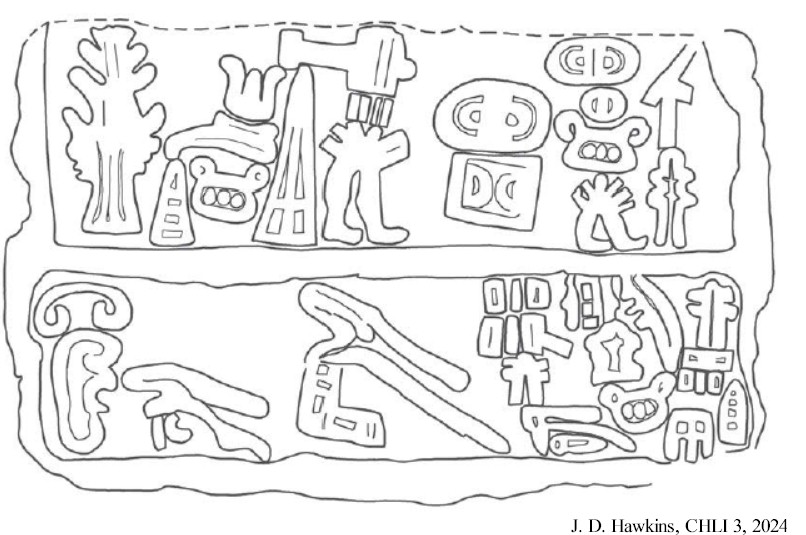TÜRKÇE
ALEPPO 1
The stone block with two lines of Hieroglyphic Luwian inscription built into the wall of the mosque, Jāmi al-Qīqān, was reported in the 19th century by several European visitors to Aleppo. Sometime in the early 20th century, the upside-down block was removed and reinstalled the right way up in another spot in the wall. In 2018 the block was reportedly moved to the Aleppo Museum. The basalt(?) block is 0.45 m high and 0.74 m wide. The inscription reads, "Talmi-arruma king of Aleppo, son of Telipinu the High Priest, built this temple of Hebat-arruma," followed by the signature of the scribe Aki-Teub. Telipinu and Talmi-arruma are the son and grandson of Hittite king uppiluliuma I. It is known that after the death of Telipinu, Talmi-arruma was assigned as the king of Aleppo by the Hittite King Mursili II. Consequently, the inscription should date to sometime between the end of the 14th and the beginning of the 13th century BCE, making it possibly the earliest datable monumental Hieroglyphic Luwian inscription.


